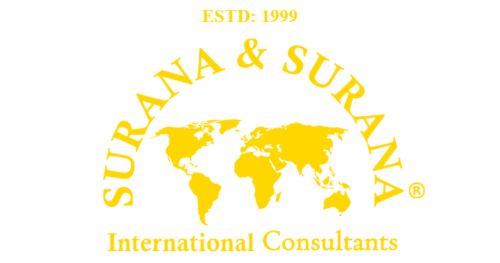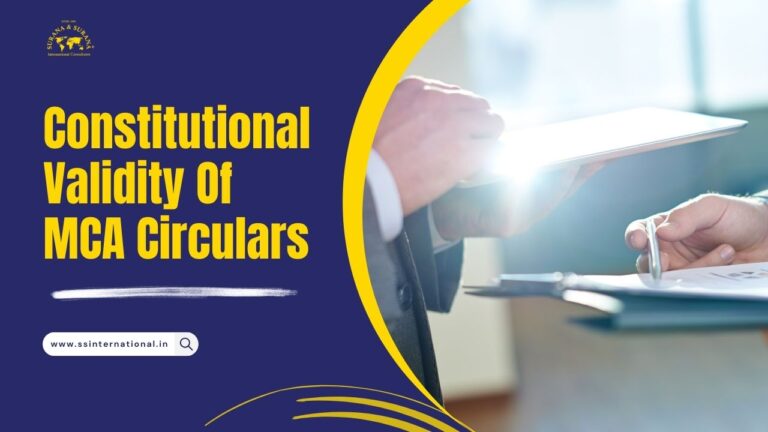Introduction
In recent years, the regulation of media and entertainment content in India has undergone significant transformations, largely influenced by the rapid growth of digital platforms and social media. From the silver screen to streaming services and social media platforms, content consumption habits are evolving rapidly. A study by Bain & Company predicts that social commerce in India will witness a compound annual growth rate of 55-60% between FY 2020-2025, expanding the current market size from $1.5-2 billion to $16-20 billion[1]. This evolution has necessitated clear guidelines and regulations to ensure responsible content dissemination while respecting cultural sensitivities and societal norms. This blog aims to delve into the various aspects of content regulation in India, focusing on Film Certification, Regulation of OTT platforms and TV Serial Certification.
CBFC Certification – Ensuring Content Compliance
The Central Board of Film Certification (CBFC) plays a pivotal role in certifying films for public exhibition in India. Established under the Cinematograph Act, 1952, the CBFC’s primary mandate is to classify films under different categories based on their content. The Cinematograph (Certification) Rules, 2024 (“Rules”) outlines the procedural requirements for film producers seeking certification for their films or video films from CBFC. Some of the salient features of these rules include:
Classification of films:
- U (Universal): Suitable for all age groups.
- UA 7+, UA 13+, and UA 16+ (Parental Guidance): Parental guidance advised for children of specified age category.
- A (Adults): Restricted to adult audiences (18 and above).
- S (Special): Restricted to specialized audiences, such as doctors or scientists.
Procedure for obtaining certification:
The Rules have introduced online certification processes to ensure enhanced transparency, efficiency, and ease of doing business for the film industry. According to Rule 22, producers must submit their films, specified materials, and required fees to the regional officer of CBFC through the e-portal. Upon receipt of these materials, an examining committee is convened by the regional officer to review the film.
For short films, the examining committee consists of a CBFC officer and one advisory panel member, including at least one woman. Long or feature films require a committee of four members, with at least two women. Each committee member submits a detailed report after previewing the film, recommending deletions, modifications, and the appropriate certification. These reports are consolidated and forwarded to the Chairperson for further action.
Under Rule 24, at the Chairperson’s discretion or upon request by the applicant, a film may be referred to a Revising Committee. This committee, chaired by the Chairperson or a designated board member, includes up to nine members from the CBFC or advisory panel, none of whom were part of the Examining Committee. They review the film without changes and record their assessments. If the Chairperson disagrees with the majority, another Revising Committee may be appointed. A quorum of five members, including at least two women, is required for the Revising Committee.
Once the Board communicates its decision, specified portions of the film must be deleted as directed. The revised film print, along with a certified copy, is then submitted to the regional officer. Throughout these processes, the applicant is given an opportunity to present their views to either the Examining or Revising Committee before any decision affecting their film is made.
Diversity of the CBFC Board:
The Rules aim to ensure diversity of the CBFC Board by stipulating that at least one-third of the members in the Board shall be women and preferably half of the members shall be women.[2]
Validity of Certification:
The Rules provide for perpetual validity of the certification obtained from the CBFC Board.
The Rules have introduced significant changes in the film certification process by CBFC to suit the paradigm shift in the consumption of film content by contemporary audiences in India.
OTT Certification:
The advent of Over-The-Top (OTT) platforms has revolutionized how content is consumed, challenging traditional regulatory frameworks. Unlike films, OTT content currently falls outside the purview of the CBFC. In 2019, Justice for Rights Foundation had filed a writ petition with the Delhi High Court wherein a plea was made to frame guidelines to regulate online platforms and content broadcasted on the online platforms.[3] Thereafter in 2022, the Central Government notified the Information Technology (Intermediary Guidelines and Digital Media Ethics Code) Rules 2021 (“OTT Rules”) to regulate OTT platforms under the Ministry of Information and Broadcasting (MIB). The OTT Rules were notified in the exercise of the power conferred to the Central Government under Section 87 of the Information Technology Act, 2000.
The significant regulatory mechanisms introduced by the OTT Rules include:
Code of Ethics
The Code of Ethics (contained in the Appendix to the OTT Rules) are required to be complied with by the social media intermediaries and significant social media intermediaries, online gaming intermediaries, news publishers and digital media organizations (“intermediaries”). The Code sets out the general principles according to which the publishers shall not transmit any content which is prohibited under law or by a court of competent jurisdiction. Further, while deciding to feature / publish any content, publishers shall consider the implications such content may have in terms of: (i) its effects on the sovereignty and integrity of the country; (ii) threatening, endangering or jeopardising the security of the country; (iii) being detrimental to the country’s friendly relations with foreign countries; and (iv) inciting any violence or disturbing the maintenance of public order in the country.
Content Classification
All content published by a publisher shall be classified into the following categories:
- U (suitable for children);
- U/A 7+ (suitable for persons aged 7 and above, and can be viewed by person under 7, with parental guidance);
- U/A 13+ (suitable for persons aged 13 and above, and can be viewed by person under 13, with parental guidance);
- U/A 16+ (suitable for persons aged 16 and above, and can be viewed by person under 16, with parental guidance); and
- A (restricted to adults): As described in the Schedule of the OTT Rules, this classification must be based on: (a) context; (b) theme; (c) tone and impact; and (d) target audience.
Compliance
The OTT Rules impose obligations on the intermediaries to (i) implement a grievance redressal mechanism; (ii) periodically inform users of any changes to its privacy policy and terms of use; (iii) retain records of users for 180 days (as opposed to 90 days under the Prior Rules); (iv) provide information to Government agencies within 72 hours in cases where such assistance is sought; and (v) take measures to remove or disable access to content prohibited under the OTT Rules within 24 hours from the receipt of a complaint (vi) appoint grievance officer for undertaking the functions specified under the OTT Rules.
Further, significant social media intermediaries and online gaming intermediaries are required to appoint a (i) chief compliance officer; (ii) nodal contact person; (iii) appoint a resident grievance officer for undertaking functions specified under the OTT Rules and (iv) publish periodic compliance report every month mentioning the details of complaints received and action taken.
Grievance Redressal Mechanism
The OTT Rules provide a three-tier structure for grievance redressal that includes the following:
Tier 1 – Self-regulation by intermediaries by appointment of a grievance office in India who would be a point of contact for any grievance related to the code of ethics and shall be the nodal point of contact between the complainant, MIB and the self-regulating body.
Tier 2 – Creation of independent self-regulation bodies, consisting of industry experts and headed by a retired judge of the Supreme Court / High Court and registered with the MIB.
Tier 3 – Regulation by an inter-departmental committee to exercise oversight, hear and examine grievances.
The rules also provide for the establishment of a Grievance Appellate Committee where any person aggrieved by the order passed by a grievance officer can prefer an appeal to the Committee within thirty days from the date of receipt of order of the grievance officer.
The relationship between OTT platforms and the OTT Rules highlights the emergence of a comprehensive framework for regulating such platforms in the process of which the harmonization of freedom of expression and user safeguarding is also ensured.
TV Serial Certification
Television remains a dominant medium for entertainment and information dissemination in India, with serials attracting a wide audience across demographics.
The content aired on television including TV serials are regulated by the Cable Television Networks (Regulation) Act, 1995 (“Cable Act”), and rules framed thereunder.
The Cable Act mandates that all programmes telecasted on TV channels and transmitted or retransmitted through the cable TV network, must adhere to the Programme Code and Advertising Code (collectively “Codes“). These Codes have been prescribed under the Cable Television Networks Rules, 1994 (“Cable Rules“) and provide for a list of parameters to regulate programmes and advertisements on Television. Unlike films, TV serials don’t require CBFC certification. However, the MIB can issue advisories to channels regarding content deemed inappropriate.
Additionally, the Broadcasting Content Complaints Council (BCCC) is the independent self-regulatory body set up by the Indian Broadcasting Foundation (IBF) to address complaints related to content broadcast on television and radio. The primary role of the BCCC is to implement self-regulatory guidelines for non-news channels, including general entertainment channels, kid’s channels, and special interest channels. Any viewer can lodge a complaint about issues related to television programmes/ shows, non-news & current affairs TV channels, and other digital content broadcaster members or associate members of IBF India.
In light of the above, it can be understood that that the framework governing television content including TV serials comprises of (i) statutory laws, (ii) self-regulatory mechanisms, and (iii) codes of conduct developed by industry bodies to oversee specific aspects.
Conclusion
To sum up, while content regulation in India aims to uphold public morality, safeguard national interests, and protect individual rights, it must also strike a delicate balance with freedom of expression and creativity. The evolving landscape of digital media necessitates adaptive regulatory frameworks that can address emerging challenges while fostering innovation and inclusivity. As India continues its digital transformation, stakeholders must collaborate to ensure that regulatory measures promote responsible content creation and consumption, thereby enriching the cultural and social fabric of the nation.
[1] https://oosga.com/social-media/ind/#:~:text=Social%20Media’s%20User%20Demographics%20in,33.4%20%25%20of%20the%20addressable%20demographics.
[2] Rule 4 of the Cinematograph Certification Rules, 2024.
[3] Justice For Rights Foundation v Union of India (W.P.(C) 11164/2018)




